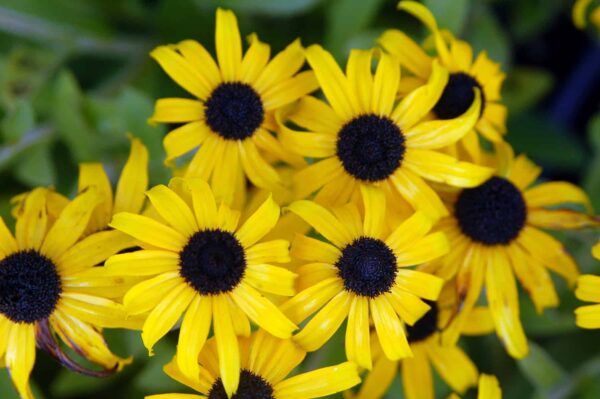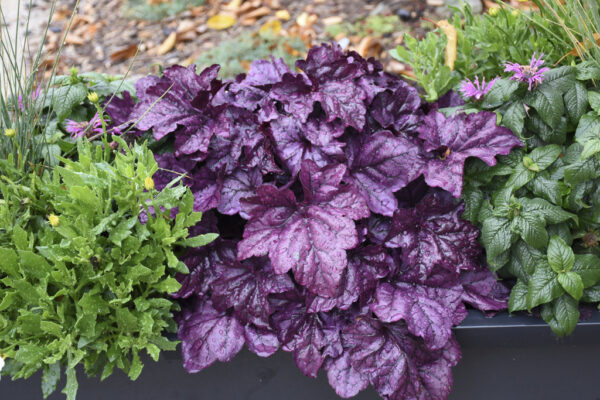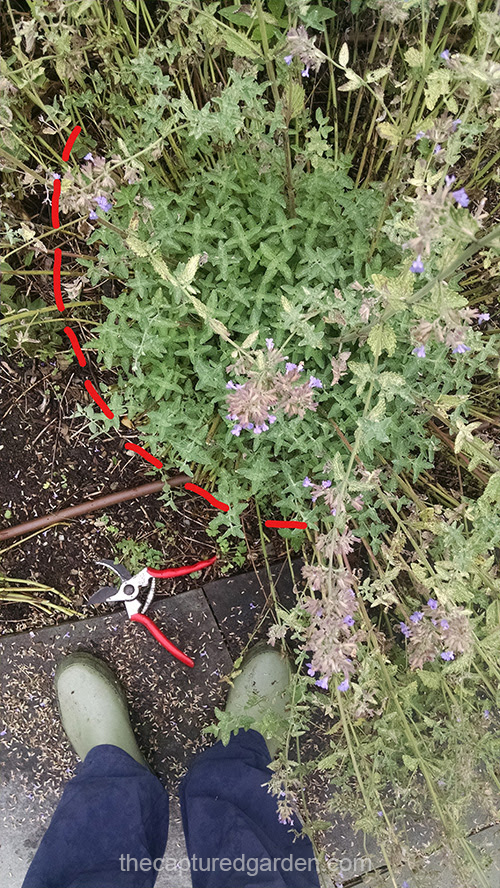2023 Perennial Plant(s) of the Year.
Drumroll please……the Perennial Plant Association’s Perennial of the Year is… Rudbekia ‘American Gold Rush’. Now to be honest, I am not a huge fan of black-eyed Susans because, in my experience, they seem to self sow EVERYWHERE. If I use them in a design they act like they to want to take over the design. ’American Gold Rush’ might have me re-thinking my former prejudice. This black-eyed Susan, which was also an AAS 2020 winner, is a shorter, more compact, dome-shaped plant. ‘American Gold Rush’ gets about 22” high by 40” wide and is hardy in Zones 4-9. It prefers full to part sun and will look beautiful in a perennial border or meadow planting. Its flowers, which are a bit lighter in color than the typical Rudbekia, are frequented by butterflies and pollinators and the seed heads are loved by birds. The seed heads also provide winter interest in the garden.

Best of all the thinner, hairier leaves of ‘American Gold Rush’ make the plant more resistant to Septoria leaf spot. Rudbekia’s susceptibility to this fungal disease is another reason I have not been a huge fan. This hybrid shows no sign of the fungus even in wetter conditions. I am happy to admit when I am wrong and it seems that ‘American Gold Rush’ might have me taking a second look at Rudbekias.
I am not wrong, however, when it comes to a penchant for great foliage. Many of you may have heard me speak about it during my talk “Look Ma, No Flowers” (for other presentation topics click here). When it comes to great foliage for your garden or container you cannot beat heuchera. I am especially enamored with heuchera ‘Wildberry’, which happens to be the Proven Winners National Perennial of the Year.

‘Wildberry’, which is part of the Dolce series, features large, scalloped, dark purple leaves with charcoal veining. It has white flowers that are covered with rosy pink calyxes but honestly with the gorgeous purple color the flowers are secondary – although the hummingbirds find them irresistable! ‘Wildberry’ gets about 14” high and 20” wide and performs equally well in sun or shade although I have found that, like many coleus, heuchera color better with some sun. Others in the Dolce series I have tried and loved include ‘Spearmint’ and ‘Cherry Truffles’. ‘Wildberry’ is a beauty I have used successfully in my gardens and containers.
Prune here perennials
Wouldn’t it be nice if gardening was easy and plants actually told you what they wanted? Some of them do. When it comes to pruning there are some that I call “prune here perennials”. These are perennials, like nepeta, that flop open after their first bloom. New growth makes a neat mound inside the plant and the area between is basically where to cut. By doing this after the first flush of bloom you can get a second round of beautiful purple flowers. I also have had success with this method with salvia. Threadleaf coreopsis and lamium also benefit from pruning back. Yarrow is another candidate, although it does not always re-bloom, it puts out fresh, good-looking new growth.

The Chelsea Chop
Is it a new dance move? Is it the Clinton’s daughter’s new show on the Food Network? Is it a haircut?
It actually is a type of haircut.
One you give your plants.
The Chelsea Chop is a method of pruning that is typically done around the time of the Chelsea Flower Show at the end of May (hence its name) although any time in late spring or early summer is fine. This type of pruning can extend flowering, and decrease the floppiness of many herbaceous perennials.

There are two ways of doing “the chop”.
The first is to cut the entire perennial clump back by 1/3 to ½ using shears. This will delay blooming and keep the plant more compact. This is especially nice on plants that can get leggy like asters and phlox. With this method, you may have more flowers but they tend to be smaller since they formed on side branches after the top shoots were removed.
The second option and one that might feel less drastic is to cut only ½ of the stems back by 1/3 to ½. This will actually extend a bloom season as there are more stems in different stages of growth.
Good candidates for the Chelsea Chop include: upright sedum, Shasta daisy, goldenrod, yarrow, Joe Pye weed, bee balm, coneflower, and black-eyed Susans. Do not try the chop on woody sub-shrubs like Russian Sage or Lavender. It’s also important to make sure the plant is healthy and robust before the chop. If not it is less likely to recover.

Follow Us!